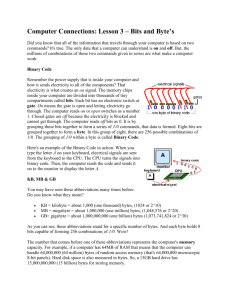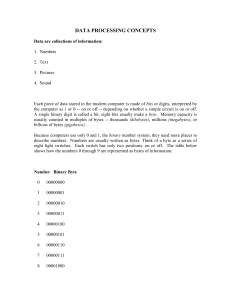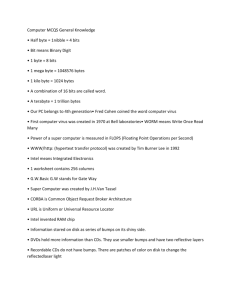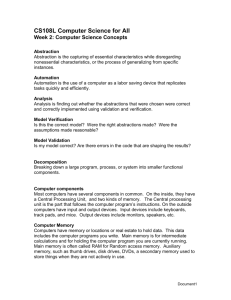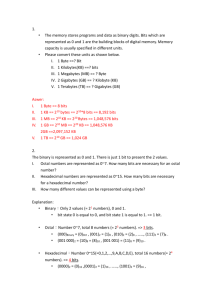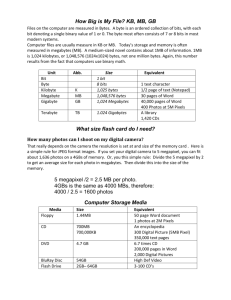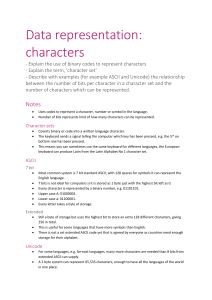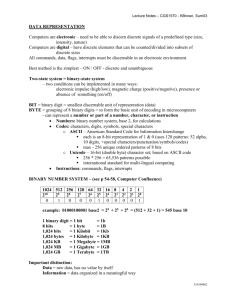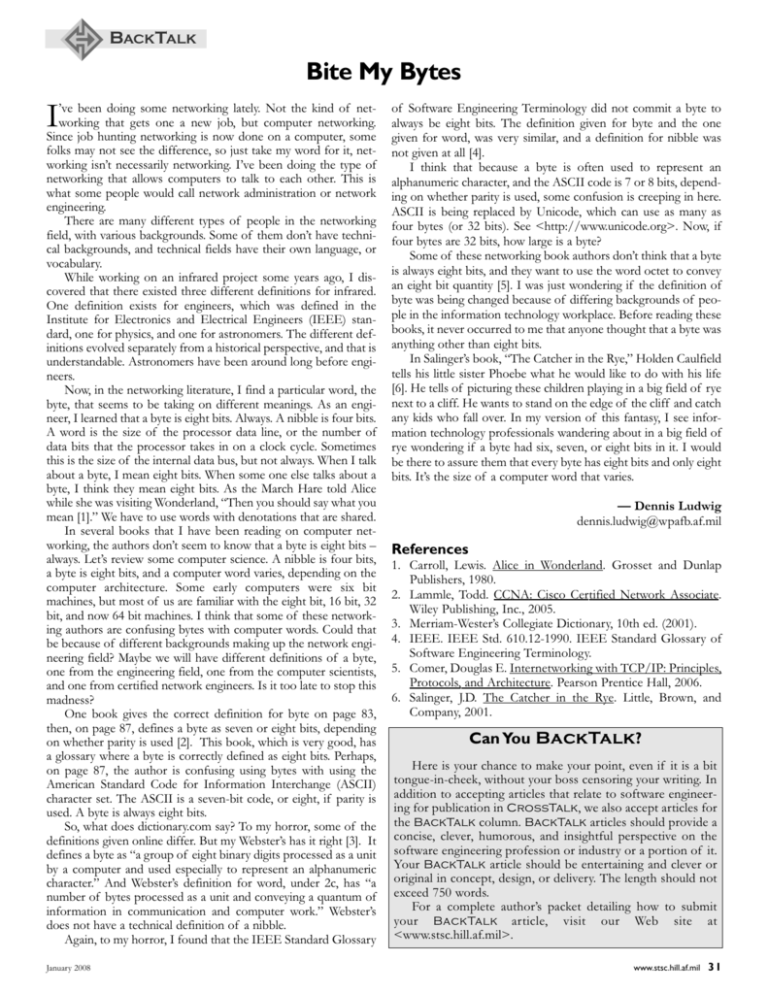
BACKTALK
I
Bite My Bytes
’ve been doing some networking lately. Not the kind of networking that gets one a new job, but computer networking.
Since job hunting networking is now done on a computer, some
folks may not see the difference, so just take my word for it, networking isn’t necessarily networking. I’ve been doing the type of
networking that allows computers to talk to each other. This is
what some people would call network administration or network
engineering.
There are many different types of people in the networking
field, with various backgrounds. Some of them don’t have technical backgrounds, and technical fields have their own language, or
vocabulary.
While working on an infrared project some years ago, I discovered that there existed three different definitions for infrared.
One definition exists for engineers, which was defined in the
Institute for Electronics and Electrical Engineers (IEEE) standard, one for physics, and one for astronomers. The different definitions evolved separately from a historical perspective, and that is
understandable. Astronomers have been around long before engineers.
Now, in the networking literature, I find a particular word, the
byte, that seems to be taking on different meanings. As an engineer, I learned that a byte is eight bits. Always. A nibble is four bits.
A word is the size of the processor data line, or the number of
data bits that the processor takes in on a clock cycle. Sometimes
this is the size of the internal data bus, but not always. When I talk
about a byte, I mean eight bits. When some one else talks about a
byte, I think they mean eight bits. As the March Hare told Alice
while she was visiting Wonderland, “Then you should say what you
mean [1].” We have to use words with denotations that are shared.
In several books that I have been reading on computer networking, the authors don’t seem to know that a byte is eight bits –
always. Let’s review some computer science. A nibble is four bits,
a byte is eight bits, and a computer word varies, depending on the
computer architecture. Some early computers were six bit
machines, but most of us are familiar with the eight bit, 16 bit, 32
bit, and now 64 bit machines. I think that some of these networking authors are confusing bytes with computer words. Could that
be because of different backgrounds making up the network engineering field? Maybe we will have different definitions of a byte,
one from the engineering field, one from the computer scientists,
and one from certified network engineers. Is it too late to stop this
madness?
One book gives the correct definition for byte on page 83,
then, on page 87, defines a byte as seven or eight bits, depending
on whether parity is used [2]. This book, which is very good, has
a glossary where a byte is correctly defined as eight bits. Perhaps,
on page 87, the author is confusing using bytes with using the
American Standard Code for Information Interchange (ASCII)
character set. The ASCII is a seven-bit code, or eight, if parity is
used. A byte is always eight bits.
So, what does dictionary.com say? To my horror, some of the
definitions given online differ. But my Webster’s has it right [3]. It
defines a byte as “a group of eight binary digits processed as a unit
by a computer and used especially to represent an alphanumeric
character.” And Webster’s definition for word, under 2c, has “a
number of bytes processed as a unit and conveying a quantum of
information in communication and computer work.” Webster’s
does not have a technical definition of a nibble.
Again, to my horror, I found that the IEEE Standard Glossary
January 2008
of Software Engineering Terminology did not commit a byte to
always be eight bits. The definition given for byte and the one
given for word, was very similar, and a definition for nibble was
not given at all [4].
I think that because a byte is often used to represent an
alphanumeric character, and the ASCII code is 7 or 8 bits, depending on whether parity is used, some confusion is creeping in here.
ASCII is being replaced by Unicode, which can use as many as
four bytes (or 32 bits). See <http://www.unicode.org>. Now, if
four bytes are 32 bits, how large is a byte?
Some of these networking book authors don’t think that a byte
is always eight bits, and they want to use the word octet to convey
an eight bit quantity [5]. I was just wondering if the definition of
byte was being changed because of differing backgrounds of people in the information technology workplace. Before reading these
books, it never occurred to me that anyone thought that a byte was
anything other than eight bits.
In Salinger’s book, “The Catcher in the Rye,” Holden Caulfield
tells his little sister Phoebe what he would like to do with his life
[6]. He tells of picturing these children playing in a big field of rye
next to a cliff. He wants to stand on the edge of the cliff and catch
any kids who fall over. In my version of this fantasy, I see information technology professionals wandering about in a big field of
rye wondering if a byte had six, seven, or eight bits in it. I would
be there to assure them that every byte has eight bits and only eight
bits. It’s the size of a computer word that varies.
— Dennis Ludwig
dennis.ludwig@wpafb.af.mil
References
1. Carroll, Lewis. Alice in Wonderland. Grosset and Dunlap
Publishers, 1980.
2. Lammle, Todd. CCNA: Cisco Certified Network Associate.
Wiley Publishing, Inc., 2005.
3. Merriam-Wester’s Collegiate Dictionary, 10th ed. (2001).
4. IEEE. IEEE Std. 610.12-1990. IEEE Standard Glossary of
Software Engineering Terminology.
5. Comer, Douglas E. Internetworking with TCP/IP: Principles,
Protocols, and Architecture. Pearson Prentice Hall, 2006.
6. Salinger, J.D. The Catcher in the Rye. Little, Brown, and
Company, 2001.
Can You BackTalk?
Here is your chance to make your point, even if it is a bit
tongue-in-cheek, without your boss censoring your writing. In
addition to accepting articles that relate to software engineering for publication in CrossTalk, we also accept articles for
the BackTalk column. BackTalk articles should provide a
concise, clever, humorous, and insightful perspective on the
software engineering profession or industry or a portion of it.
Your BackTalk article should be entertaining and clever or
original in concept, design, or delivery. The length should not
exceed 750 words.
For a complete author’s packet detailing how to submit
your BackTalk article, visit our Web site at
<www.stsc.hill.af.mil>.
www.stsc.hill.af.mil
31



